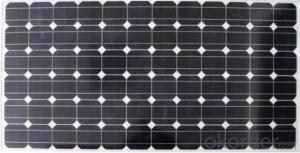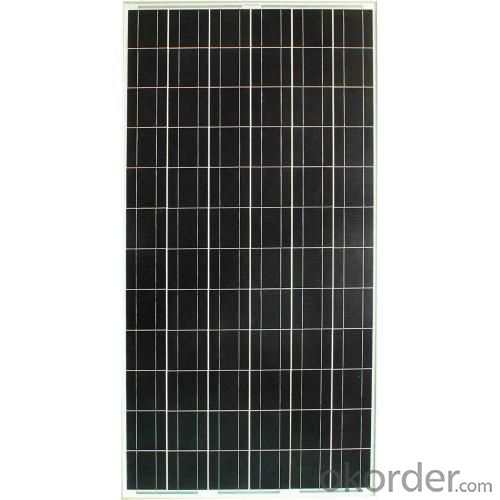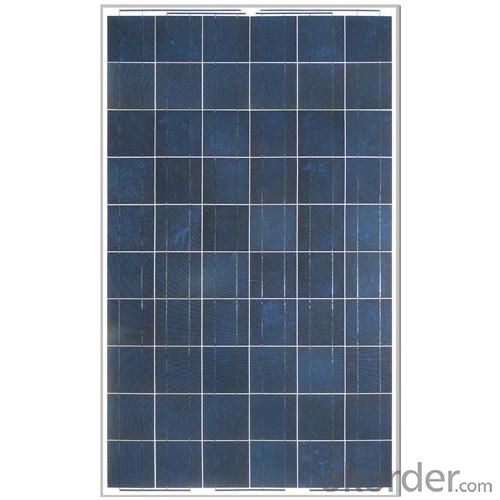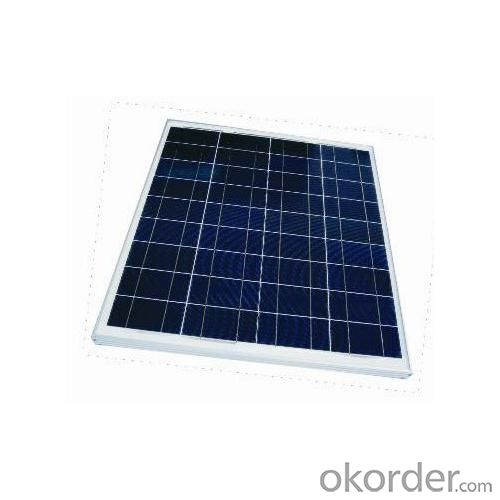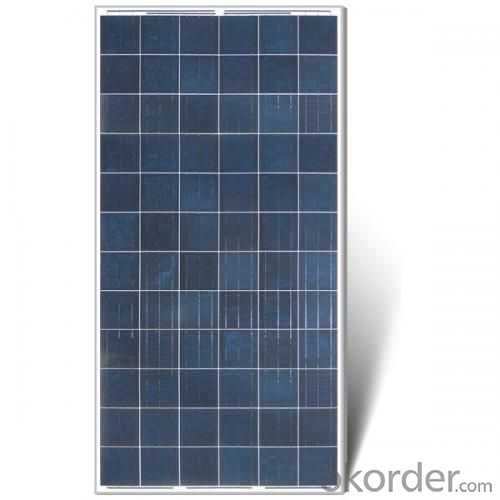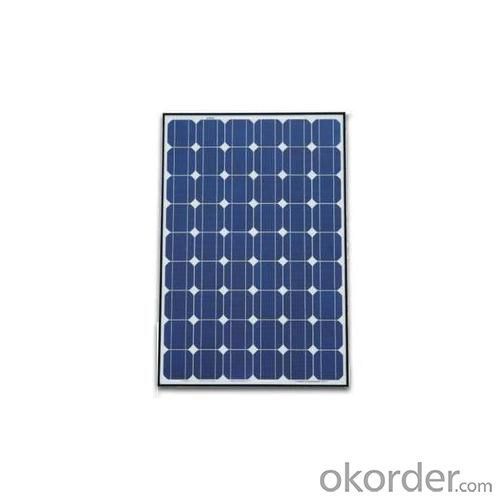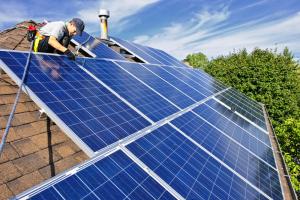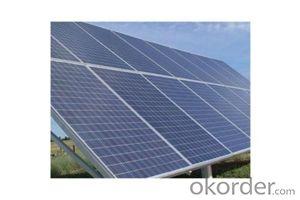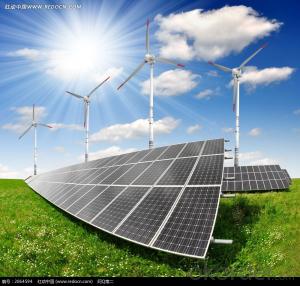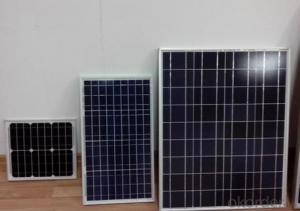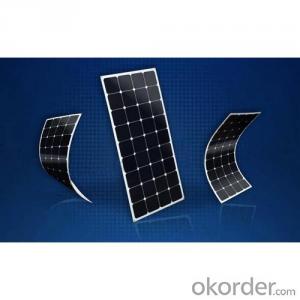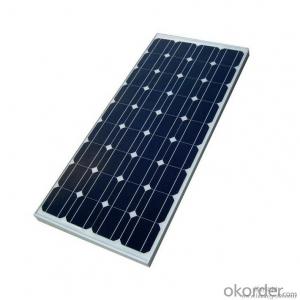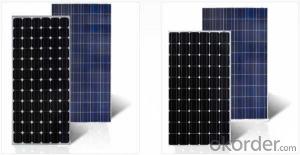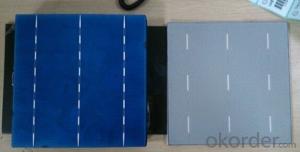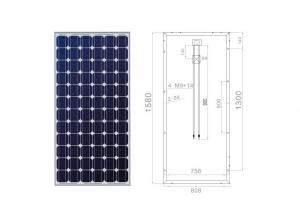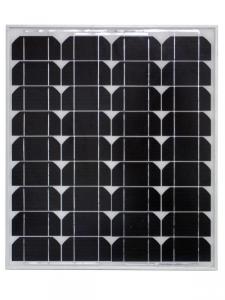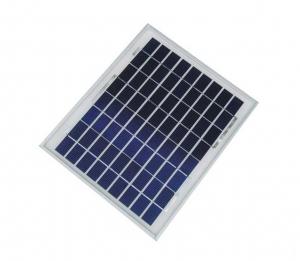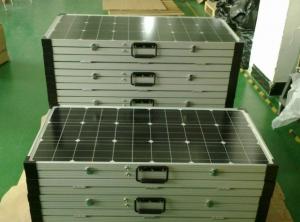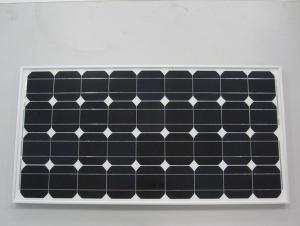Solar Polycrystalline 156mm Series (25W-35W) - Solar Panels Cambridge
- Loading Port:
- Shanghai
- Payment Terms:
- TT OR LC
- Min Order Qty:
- 1000 watt
- Supply Capability:
- 20000000 watt/month
OKorder Service Pledge
OKorder Financial Service
You Might Also Like
Specification
1.Structure of Solar Module Description
Solar Polycrystalline 156mm Series (25W-----35W)
2.Characteristics of the Solar Module
| Max Power Voltage Vmp (V) | 17.4 | 17.6 | 17.8 |
| Max Power Current Imp (A) | 1.44 | 1.71 | 1.97 |
| Open Circuit Voltage Voc (V) | 22.0 | 22.2 | 22.4 |
| Short Circuit Current Isc (A) | 1.54 | 1.83 | 2.11 |
| Max Power Pm(W) | 25 | 30 | 35 |
3.Limits of the Solar Module
Operating Temperature ﹣40℃to+85℃
Storage Temperature ﹣40℃to+85℃
Max System Voltage 700V
4.Specifications of the Solar Module
| Power | 25W | 30W | 35W |
| Dimension | 350x670x30mm | 380x670x30mm | 420x670x30mm |
| Weight | 2.8kg | 3.0kg | 3.8kg |
| Tolerance | ±3% | ±3% | ±3% |
Certificate | TUV VDE UL ISO IEC |
The dimension of the modules can be changed according to the demand of clients
5.Applications of the Solar Module
1.Electricity
2.Heat energy
6.IMages of the Solar Module
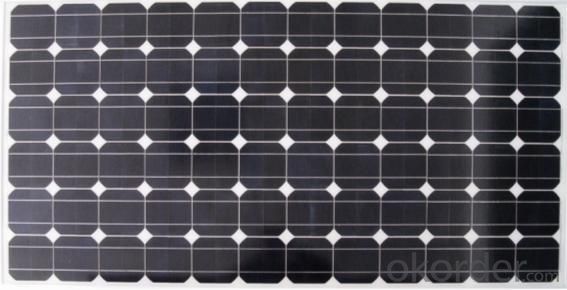


FAQ
1. Q: Do you have your own factory?
A: Yes, we have. Our factory located in Jiangyin city, jiangsu province.
2. Q: How can I visit your factory?
A: Before you take off from your country, please let us know. We will show you the way,or arrange time to pick you up if possible.
3. Q: Do you provide free sample?
A: Usually we do not offer free sample
4. Q: Could you print our company LOGO on the nameplate and package?
A: Yes, we can do that.
- Q: Can solar panels be installed on sports stadiums or arenas?
- Yes, solar panels can be installed on sports stadiums or arenas. In fact, many stadiums around the world have already adopted solar energy systems to generate electricity and reduce their carbon footprint. The large roof surfaces of these venues provide ample space for the installation of solar panels, allowing them to harness clean and renewable energy from the sun.
- Q: I have 2 solar panels one is 5 watts 2 volts .2 amps or -The other is 50 watts 2 volts 2.6 amps or-Can I ...and what is the best way to hook them togeather to increase my amps being put back to my battery ?? I would be hooking them up to a 7 amp 00 watt charge controllerThe panels are rated 2 volt but the specs say they will produce more whennot connected to charge controllerPlease advise and should I even bother with the smaller panel ?
- The answer is that the two panels should be put in parallel. The voltage out will drop to the voltage of the lower panel, but you should get most of the power, if the panels aren't too badly mismatched. I would try to get a multimeter and try to measure the actual current coming out of the panels in full sun. Sometimes the specifications on these smaller panels are very optimistic. If the whole setup is putting out less than 2 amps, I'd say wire the whole thing straight to the battery - little chance of boiling the electrolyte at those currents.
- Q: i check the diodes in the backside of solar panels it reads out to be 0.433 each give me the same result but i was amazed when i check out the last two one which on clamp meter screen give me ''0L'' what this means? is that diode have malfunctions??is this reasons that the output of solar has been decreased?
- First of all, make sure that you are taking readings in the dark (with the solar panel indoors and covered). 0.433 is a reasonable forward voltage for a Schottky diode. Ideally, it diode should read open one way (possibly OL for your meter), and 0.4 the other way. If it's reading OL both ways, the diode is bad. You can either unsolder it or cut it out and verify that it is bad.
- Q: I want to buy a solar panel kit but I'm unsure of how it works. Basically I want to run my entainment set, Xbox, cable box, 46 led tv, and some desktop speakers. I went online and found a kit for like 250 or something like that at homedepot and was wondering if that kit is worth the money or go bigger or something.
- It isn't really that simple. First you have to decide if you are going to use it after dark and in cloudy weather. If so you are going to need batteries to store power. You are also going to need an inverter to convert the direct current, low voltage power to 20 volt alternating current. Once you have made those decisions you need to determine power requirements. Look at the back of each piece of equipment and find the wattage rating for the device. Add them together and you will have a starting point for power consumption. Since you will want to charge the batteries during daytime and you have parasitic drain from the inverter use you want to increase that number by 50%. When selecting the number of panels you want you have to assume they will not operate at the optimum they do deteriorate over time so de-rate them by about 50%. Once again, look at the data plate to determine wattage and get enough panels to meet the power requirements using the criteria I have mentioned.
- Q: Can solar panels be installed on a government building?
- Yes, solar panels can be installed on a government building. In fact, many government buildings have already implemented solar energy systems to reduce their carbon footprint and lower energy costs.
- Q: I would like to connect a solar panel to a small fan. I am not sure as to what is needed to actually quot;connectthe two together. Any help is appreciated.
- If your fan uses a tiny motor like in a cell phone vibrator, you might be able to use just a few solar cells. Otherwise, you might find the voltage and current from a pre-assembled panel, and get a fan that uses less power. You will then likely need electronics to match the two up, and maybe a battery to keep it going when the sun goes down.
- Q: Can solar panels be installed on a shipping container?
- Yes, solar panels can be installed on a shipping container. In fact, many people and businesses are now utilizing shipping containers as a platform for solar installations due to their portability and ease of installation.
- Q: where can i get some solar panels for a camper trailer
- Homemade okorder /
- Q: Are solar Panels worth it, Do they really quot;save moneyon electricity?
- I say yes, I had a method put in a couple of months ago. I paid $6K and my utility paid $0K. I should destroy even in about 6 years. The procedure is guaranteed for 25 years, so i will have as a minimum 9 years of free vigour. I went from a invoice of round $200 per month to underneath $20 in the summer. I will pay a bit of extra in the winter months given that much less daytime, but i do not use as so much power within the wintry weather. Each and every 2 months electrical power goes up an ordinary of 5%, so while my neighbors have a larger bill each and every month, i will be staying underneath $50 for a long time. Even with out the rebate i would have a smash even time of about 0 years, nonetheless 5 years of free vigour.
- Q: how does solar panels work?
- Solar panels collect solar radiation from the sun and actively convert that energy to electricity. Solar panels are comprised of several individual solar cells. These solar cells function similarly to large semiconductors and utilize a large-area p-n junction diode. When the solar cells are exposed to sunlight, the p-n junction diodes convert the energy from sunlight into usable electrical energy. The energy generated from photons striking the surface of the solar panel allows electrons to be knocked out of their orbits and released, and electric fields in the solar cells pull these free electrons in a directional current, from which metal contacts in the solar cell can generate electricity. The more solar cells in a solar panel and the higher the quality of the solar cells, the more total electrical output the solar panel can produce. The conversion of sunlight to usable electrical energy has been dubbed the Photovoltaic Effect. The photovoltaic effect arises from the properties of the p-n junction diode, as such there are no moving parts in a solar panel.
Send your message to us
Solar Polycrystalline 156mm Series (25W-35W) - Solar Panels Cambridge
- Loading Port:
- Shanghai
- Payment Terms:
- TT OR LC
- Min Order Qty:
- 1000 watt
- Supply Capability:
- 20000000 watt/month
OKorder Service Pledge
OKorder Financial Service
Similar products
Hot products
Hot Searches
Related keywords
